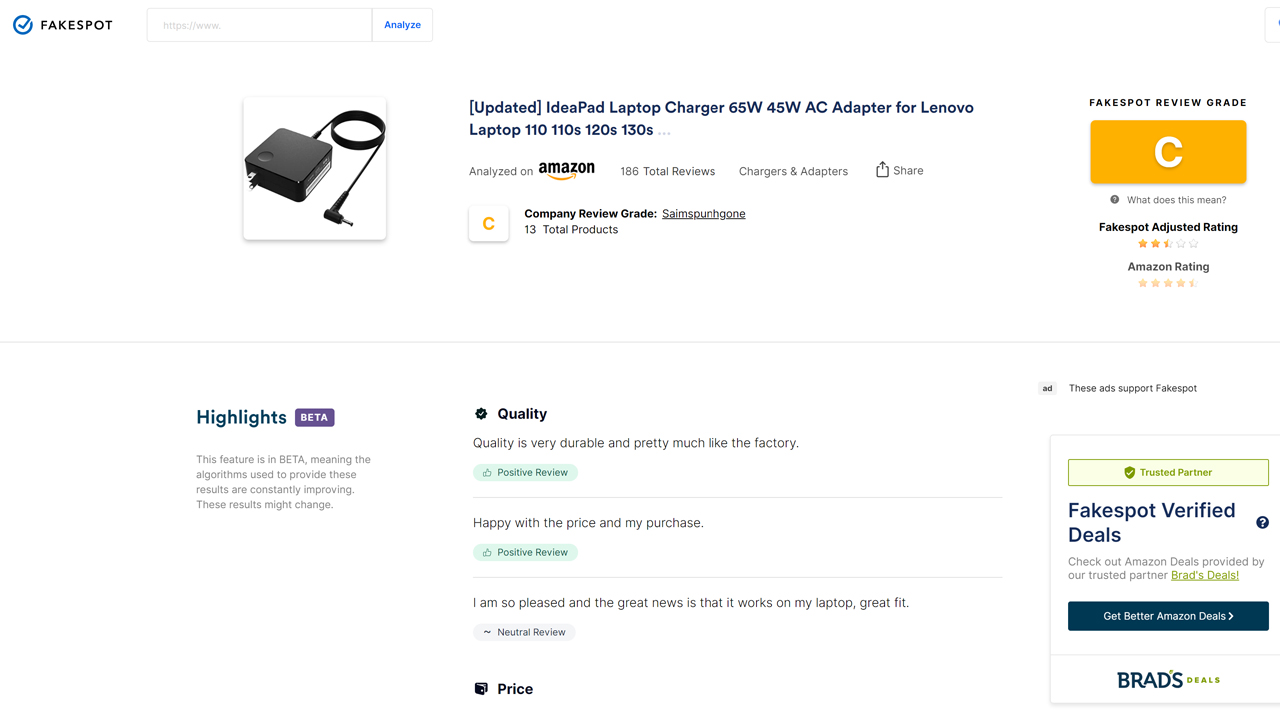Paid-for user reviews a huge problem for sites like Amazon - here's how to spot the fakes
New investigation by UK site Which? has revealed over 702,000 fake user reviewers, who are paid to game the system. Here’s how to avoid the scams.

According to UK consumer site Which? there is a thriving global business centered on the generation and promotion of fake user reviews for sites like Amazon and other large retailers. The research, recently published by the site, claims that there are over 702,000 fake reviewers out there, who are incentivized by at least five of the ten businesses that Which? investigated. Some are paid to write false reviews of products, while others are given large discounts, or free products, in exchange for favorable reviews and the upvoting of other fake reviews.
So, how are these sites gaming the system? Many simply sell packages of fake reviews to third-party sellers on sites like Amazon. According to Which? one company called AMZTigers “sells them individually for around £13, or in bulk packages starting at £620 for 50 reviews”. That’s around $15 per review, and $650 for 50. Some sites offer subscription packages, according to the report, which can provide companies with ten positive reviews per month, with 50 upvotes to other positive reviews.
Some sites, which primarily operate via Facebook groups, arrange free items or discounted goods for anyone willing to write positive reviews, regardless of the quality of the product itself. And, most troubling of all, is that some companies - according to the Which? report - buy the contact information of Amazon customers and message them directly (unsolicited) to ask for positive reviews in exchange for rewards or remuneration.
Amazon itself claims to analyze over 10m user reviews annually, to attempt to guarantee authenticity, but it certainly can’t check every single one. It has also taken legal action against several companies to stop them from trading in user reviews, but this hasn’t stopped the business of selling fake customer reviews at all.

How do you spot a fake user review?
With the increasing sophistication of fake user reviews on sites like Amazon, it can be tough to separate what’s genuine from what’s false. In the report, Which? identified sites that provide guidance to its fake reviewers on ‘how to create a credible review’, including the use of images and certain word counts. However, there are ways to make sure that the information you read on large retail sites, from users, is genuine. And if you’re at all worried about whether the site itself is trustworthy, some of the best credit cards offer fraud protection, so you can shop with more confidence.
1. Use a browser app
As fake reviews become smarter, so does the technology to spot them. We recommend something like Fakespot, which is a completely free browser extension designed to analyze pages for fake and untrustworthy user reviews. You can find Fakespot here. It doesn’t download anything to your PC or Mac - it just adds an extension to your web browser. When you arrive on a product page on any of the sites it covers - like Amazon, Walmart, or Best Buy - you can scan all reviews on that page with the click of a button. The information you get back, after a few seconds, tells you what percentage of reviews are likely to be authentic, and an adjusted user review score to reflect what people actually think of the product.
2. Check the date
How many user reviews of the product were posted in the same week, or on the same day? How long has the product been available? If you see large clusters of reviews dated in the same day or week, or you find that a product which has only been available for a few weeks has somehow amassed hundreds or thousands of user reviews… they’re probably fakes. Once you dig deeper, you’ll likely find that these reviews are short, repeat each other, and contain very little actual information.
Sign up to receive the latest news, reviews, buying guides and deals direct to your inbox

3. Look for reviews that cover multiple products
As strange as it may sound, some reviews are designed to be copied and pasted across multiple products. So if you see a phone charger also referencing positive aspects of a printer and a rucksack, for example, this review is likely bogus. You may also find that fake user reviews contain images of products that are unrelated to the review, or that there are a number of generic images attached to that review, which add little or no value to the words.
4. Check products on reliable review sites
If you’re buying a $10 HDMI cable and you’re suckered by fake reviews… it isn’t the end of the world. If you’re buying a $400 TV and you fall for false reviews, that is a much bigger problem. Our advice is that if you’re buying a more expensive product, you should always look at a couple of proper, professionally written reviews before you buy. Even if you disagree with them, and you buy anyway, you’re going into the purchase with your eyes open, and know that while it isn’t as perfect as the user reviews suggest, you are happy with what you’re actually getting.
If you’re ever in doubt about buying a product online, you should always check the returns and refunds policy on that item. While it may be inconvenient to return an item, and pay for additional shipping, at least you won’t lose your money completely if it turns out to be a dud.
If you’re concerned about people accessing your data and contacting you about user reviews, we always recommend using any of the best VPN services to mask your IP address, and considering identity theft protection services if you are seriously worried.
Andy was the previous Editor-in-Chief of Top Ten Reviews. With over 18 years experience in both online and print journalism, Andy has worked for a host of world-leading tech and gaming brands, including PC Gamer and GamesRadar. He specializes in photography, technology and smart home, and has provided expert comment for sites like The Guardian. In his spare time Andy is an amateur photographer, and teaches at the National Film and TV School.

